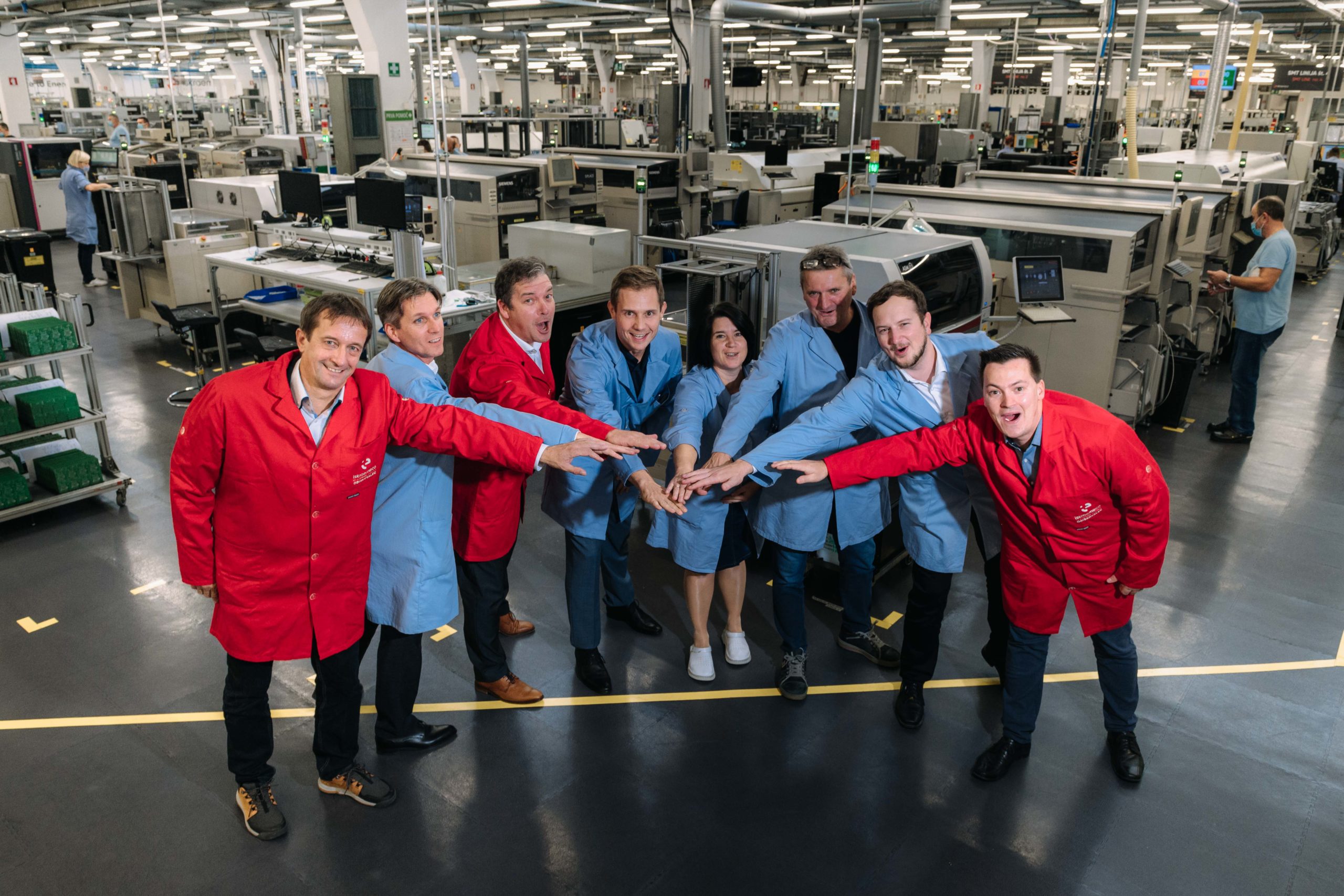Especially in difficult times, it is important to identify and improve weak points in the work process.
Here is what we at Iskraemeco have recently done to improve our processes:
1. Consolidate the production layout. With a new layout, we consolidated operations that were previously spread across four dispersed locations. The new layout not only improved efficiency but also reduced inventory.
2. Optimization of the THT process – soldering. With this improvement, we increased throughput per employee by 10%, optimized THT soldering parameters, removed non-value added processes on the assembly lines, and introduced SMED on the SMT lines. Prior to the improvements, we were struggling with capacity losses due to lengthy changeovers on the SMT lines, downtime on the THT lines, and unbalanced processes on the assembly lines.
3. Automated THT assembly. We have significantly reduced costs by robotizing the THT and assembly lines.
4. Reduced administrative overhead. We have significantly reduced the administrative burden by introducing automatic blocking of workstations if the operator does not have sufficient qualifications and has not passed the ESD examination, and by automating the booking of (semi-)finished parts.
What is the key component of this success?
It’s not just that any optimization needs to be project-driven (with clear goals, assigned team, actions plan, regular follow-ups, etc.), but it’s the ownership and commitment of the team members that bring the positive result at the end of the day.
Therefore, dear team in Production, Technology and IT, thank you for your focused approach and determination to succeed. Also, a big thank you goes to our management team for their support and for creating such a positive environment. Since optimization is not possible without a detailed analysis and critical evaluation of the proposed ideas, the method of video recording (5Δ©) was used. Our partner 3projekt d.o.o. helped us on the successful path of improvement.
As the optimization cycle never stops, we will continue with new investments in automation and robotization of both production and logistics processes.



